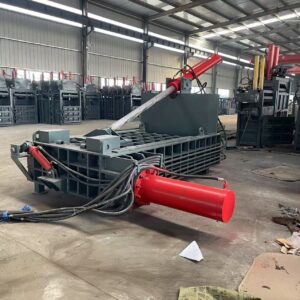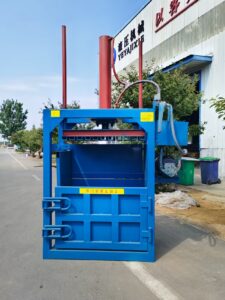Horizontal vs. Vertical Metal Balers: Which One Fits Your Needs?
Introduction
In the scrap recycling industry, choosing the right metal baler machine can significantly impact your efficiency, operating costs, and overall profitability. Two of the most popular options are the Horizontal Metal Baler and the Vertical Metal Baler. Both machines compress scrap metal into high-density bales, but they are designed for different types of operations. This article explores the differences, advantages, and ideal applications of each type to help you make the right decision.
What Is a Metal Baler?
A metal baler is a piece of heavy-duty scrap processing equipment used to compress and package metal waste (such as steel, aluminum, copper, and stainless steel) into dense, easy-to-transport bales. These machines reduce storage space, improve logistics, and increase recycling efficiency.
Metal balers are generally divided into two categories: horizontal balers and vertical balers. Let’s look at how they compare.
Horizontal Metal Balers

Features
-
Designed with a horizontal compression chamber.
-
Continuous feeding system, ideal for large volumes of scrap.
-
High automation, often equipped with conveyors.
-
Produces uniform, high-density bales.
Advantages
-
High throughput: Perfect for large recycling facilities handling tons of scrap daily.
-
Time-saving: Automated feeding reduces manual labor.
-
Consistent bale size: Improves transportation and storage efficiency.
Best Applications
-
Large scrap yards.
-
Steel mills.
-
Metal processing plants.
-
Recycling centers with high-volume requirements.
Vertical Metal Balers

Features
-
Scrap is loaded from the top, and compressed vertically.
-
Typically smaller and more affordable than horizontal balers.
-
Operated with manual feeding and control.
Advantages
-
Lower investment cost: Great for small and medium-sized businesses.
-
Space-saving design: Fits well in facilities with limited floor space.
-
Simple operation: Easy to maintain and operate.
Best Applications
-
Small scrap yards.
-
Workshops or repair shops.
-
Businesses with moderate recycling volumes.
-
Ideal for baling aluminum cans, light scrap, or sheet metal.
Horizontal vs. Vertical: Side-by-Side Comparison
|
Feature |
Horizontal Metal Baler |
Vertical Metal Baler |
|---|---|---|
|
Capacity |
High volume, continuous |
Low to medium volume |
|
Automation |
High, conveyor-fed |
Manual or semi-auto |
|
Bale Size Consistency |
Very uniform |
Less uniform |
|
Investment Cost |
Higher |
Lower |
|
Floor Space |
Requires more space |
Compact, space-saving |
|
Ideal Users |
Large recycling plants |
Small to mid businesses |
How to Choose the Right Metal Baler
When deciding between a horizontal baler and a vertical baler, consider:
-
Scrap Volume – High volumes require horizontal; low/medium volumes can use vertical.
-
Available Budget – Horizontal balers cost more but offer faster ROI for large operations.
-
Available Space – Vertical balers fit into tighter spaces.
-
Automation Needs – If you want reduced labor costs, horizontal balers are the best option.
Conclusion
Both Horizontal Metal Balers and Vertical Metal Balers play a critical role in modern scrap recycling. If you run a large-scale recycling plant or steel mill, a Horizontal Metal Baler is the best choice for efficiency and throughput. On the other hand, if you operate a small scrap yard, workshop, or have limited space, a Vertical Metal Baler provides an affordable and practical solution.
By carefully evaluating your scrap volume, budget, and facility space, you can choose the baler that fits your needs and boosts your recycling productivity.
